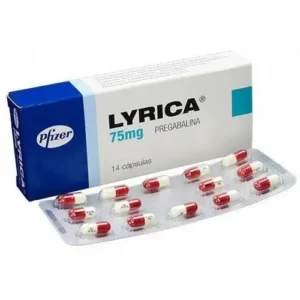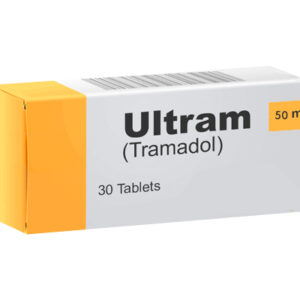Description
Buy Percocet online to manage pain effectively and conveniently. Percocet, a powerful painkiller, combines acetaminophen and oxycodone to provide relief from moderate to severe pain. For those seeking to buy Percocet online, understanding its uses, benefits, and safe purchasing practices is crucial. This guide will help you make informed decisions and find a reliable source to buy Percocet from our store.
What is Percocet?
Percocet is a prescription medication used to treat moderate to severe pain. It combines two active ingredients:
- Oxycodone: An opioid pain reliever that acts on the brain to change how your body feels and responds to pain.
- Acetaminophen: A non-opioid pain reliever that can also reduce fever.
Benefits of Percocet
- Effective Pain Relief: Provides significant relief from moderate to severe pain.
- Combination Formula: The combination of oxycodone and acetaminophen enhances pain-relieving effects.
- Quick Onset: Fast-acting relief makes it suitable for acute pain management.
Why Buy Percocet Online?
Buying Percocet online offers several advantages, especially for those dealing with chronic pain or mobility issues.
1. Convenience
Buying Percocet online provides the convenience of having your medication delivered directly to your doorstep. This is especially beneficial for individuals with limited mobility or busy schedules.
2. Discreet Purchasing
Online purchasing offers privacy and discretion, which can be important for those who prefer not to discuss their medical needs publicly.
3. Competitive Pricing
Online pharmacies often offer competitive prices, allowing you to save money compared to traditional brick-and-mortar pharmacies.
How to Buy Percocet Online Safely
When buying Percocet online, it’s essential to follow these guidelines to ensure you are purchasing from a legitimate and safe source.
1. Choose a Reputable Online Pharmacy
Ensure the online pharmacy is licensed and has positive reviews from other customers. Look for contact information and customer service options to verify the legitimacy of the pharmacy.
2. Verify Prescription Requirements
Percocet is a prescription medication. A reputable online pharmacy will require a valid prescription from a licensed healthcare provider. Avoid sites that offer to sell Percocet without a prescription.
3. Check for Secure Transactions
Ensure the website uses secure encryption methods for transactions to protect your personal and financial information. Look for “https” in the URL and a padlock icon in the address bar.
4. Review Product Information
Carefully read the product information, including dosage, potential side effects, and interactions with other medications. This will help you understand how to use Percocet safely and effectively.
Understanding Dosage and Usage
Proper usage of Percocet is crucial for effectiveness and safety. Always follow the prescribed dosage and instructions provided by your healthcare provider.
Dosage Guidelines
- Starting Dose: Typically, the starting dose is one tablet every six hours as needed for pain.
- Maximum Dose: Do not exceed the recommended dose to avoid the risk of overdose or severe side effects.
Tips for Safe Use
- Avoid Alcohol: Do not consume alcohol while taking Percocet, as it can increase the risk of serious side effects.
- Monitor for Side Effects: Common side effects include nausea, dizziness, and drowsiness. Contact your healthcare provider if you experience severe or unusual symptoms.
- Follow Storage Instructions: Store Percocet in a secure place away from children and pets.
Potential Side Effects and Risks
Like all medications, Percocet can cause side effects. Understanding these risks can help you use the medication safely.
Common Side Effects
- Nausea and vomiting
- Dizziness and drowsiness
- Constipation
Serious Risks
- Dependence and Addiction: Prolonged use of Percocet can lead to dependence or addiction. Use only as directed by your healthcare provider.
- Respiratory Depression: High doses can cause severe respiratory depression. Seek immediate medical attention if you experience difficulty breathing.
Conclusion
Buying Percocet online can be a convenient and effective way to manage pain when done safely and responsibly. By choosing a reputable online pharmacy, verifying prescription requirements, and understanding how to use Percocet properly, you can ensure a positive experience.
For a reliable source, visit our Trusted Online Pharmacy today to buy Percocet online and get the pain relief you need.
By following these guidelines and utilizing our trusted services, you can safely buy Percocet online and enjoy the benefits of effective pain management. Stay informed, make smart purchasing decisions, and prioritize your health and safety.
Buy Percocet Online from Our Store today and experience the best in pain relief solutions.
Follow us on social media









Reviews
There are no reviews yet.